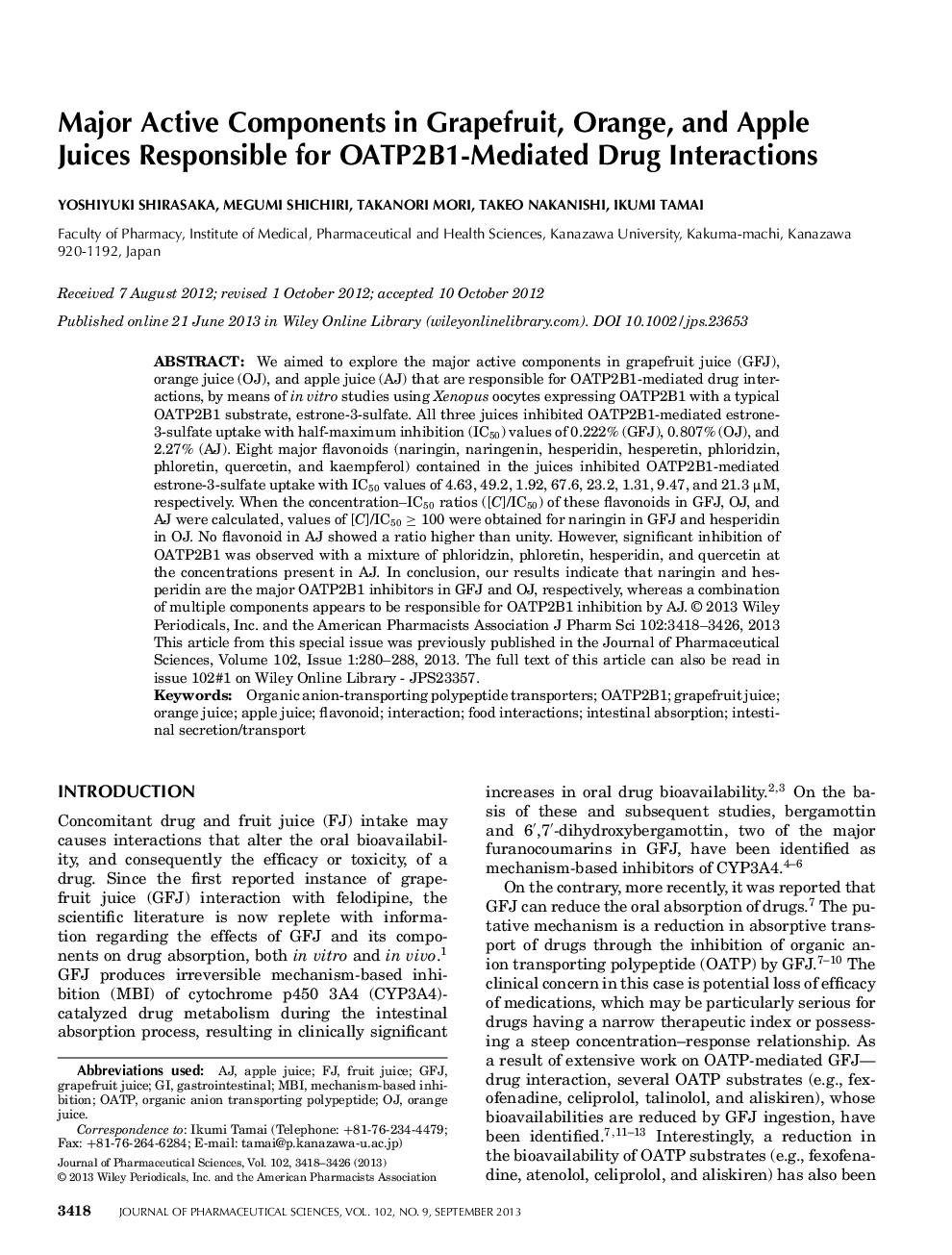| Article ID | Journal | Published Year | Pages | File Type |
|---|---|---|---|---|
| 2484854 | Journal of Pharmaceutical Sciences | 2013 | 9 Pages |
ABSTRACTWe aimed to explore the major active components in grapefruit juice (GFJ), orange juice (OJ), and apple juice (AJ) that are responsible for OATP2B1-mediated drug interactions, by means of in vitro studies using Xenopus oocytes expressing OATP2B1 with a typical OATP2B1 substrate, estrone-3-sulfate. All three juices inhibited OATP2B1-mediated estrone-3-sulfate uptake with half-maximum inhibition (IC50) values of 0.222% (GFJ), 0.807% (OJ), and 2.27% (AJ). Eight major flavonoids (naringin, naringenin, hesperidin, hesperetin, phloridzin, phloretin, quercetin, and kaempferol) contained in the juices inhibited OATP2B1-mediated estrone-3-sulfate uptake with IC50 values of 4.63, 49.2, 1.92,67.6, 23.2, 1.31,9.47, and 21.3 μM, respectively. When the concentration-IC50 ratios ([C]/IC50) of these flavonoids in GFJ, OJ, and AJ were calculated, values of [C]/IC50 ≥ 100 were obtained for naringin in GFJ and hesperidin in OJ. No flavonoid in AJ showed a ratio higher than unity. However, significant inhibition of OATP2B1 was observed with a mixture of phloridzin, phloretin, hesperidin, and quercetin at the concentrations present in AJ. In conclusion, our results indicate that naringin and hesperidin are the major OATP2B1 inhibitors in GFJ and OJ, respectively, whereas a combination of multiple components appears to be responsible for OATP2B1 inhibition by AJ. © 2013 Wiley Periodicals, Inc. and the American Pharmacists Association J Pharm Sci 102:3418–3426, 2013 This article from this special issue was previously published in the Journal of Pharmaceutical Sciences, Volume 102, Issue 1:280-288, 2013. The full text of this article can also be read in issue 102#1 on Wiley Online Library - JPS23357.
